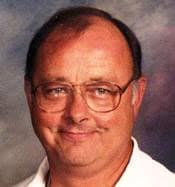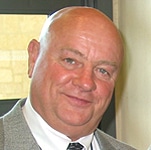Delegates at the UTU’s Eleventh Quadrennial Convention amended the UTU Constitution by adopting eight proposals, one of which will remove the dues obligation of officers on E-49 status, and another of which will require all UTU Locals to adopt a set of bylaws.
The changes to the Constitution become effective Nov. 1, 2011, except where otherwise indicated.
A PDF of the UTU Constitution as amended at the convention will be posted on the UTU’s website at www.utu.org.
Article 2, which defines the UTU’s hierarchical structure, was amended to remove the requirement that the six alternate vice presidents not representing the Bus Department be tied to certain geographic locations. Under the change, which took effect immediately, all six were elected on an at-large basis, instead of having two elected from the eastern territory, two from the western territory and two from the southern territory.
The change to Article 2 also immediately altered the method of filling a non-Bus Department vice presidential vacancy that might occur between conventions, again decoupling the candidates from a geographic territory. Such vacancies are now to be filled via a two-thirds vote of the Board of Directors, who will choose from among the six alternate vice presidents not representing the Bus Department.
Article 2 continues to call for one Bus Department alternate vice president to come from the west, and one from the east, with the Mississippi River serving as the line of demarcation. Also unchanged is the Article 2 provision calling for a vacancy in the Bus Department vice presidential position to be filled by the senior alternate vice president representing the Bus Department.
Meanwhile, in a “housekeeping” move which took effect immediately to remain consistent with the immediate changes to Article 2, delegates amended Article 36 to reflect the language change adopted in Article 2. The minor language change in both articles clarified that the UTU International has seven vice presidential positions, one of which represents the Bus Department.
In another “housekeeping” action taking immediate effect, delegates amended Article 3 to reflect the reality that the UTU International has not, for decades, actually been located within the city limits of Cleveland, Ohio, but is located in the Cleveland, Ohio, area.
Among changes to take effect Nov. 1, 2011, was amendment of Article 7, which addresses eligibility for elective office. The amendment aimed to correct an unintended consequence of action taken at the Tenth Quadrennial Convention.
Over the past several years, the U.S. Department of Labor has maintained that, under Article 7, members in “E-49” status (i.e., temporarily relieved of paying dues as a result of sickness or being laid off, in accordance with the provisions of Article 49) had to continue to pay full dues to retain their elective offices.
The intention of the Article 7 amendment adopted at the recent convention is to allow members in E-49 status to continue to hold office while exempt from dues payments.
To enact this correction, delegates amended Article 7 to include a new final paragraph, designated as paragraph (h), reading: “Is serving as a Local Officer and/or Local Committee of Adjustment Officer who serves on a part-time basis need only be members in good standing to retain their office.” The added paragraph, which appears somewhat awkward on its own, completes a sentence begun at line 1 of Article 7.
Article 12, dealing with International dues and assessments, includes a provision allowing Locals to petition for reduced International dues. Action taken by delegates provides for an annual review of such reductions, effective Nov. 1, 2011.
Delegates also took action to alter the authority of the General Secretary and Treasurer (GS&T) through amendment of line 2 of Article 19, which previously had granted “exclusive jurisdiction and authority over the financial affairs” of the UTU to the GS&T. Effective November 1, the GS&T is assigned “joint jurisdiction and authority with the International President over the financial affairs” of the UTU.
Adoption of a one-word change in line 13 of Article 39 will also take effect November 1, requiring all UTU Locals to adopt a set of bylaws. Previously, the line indicated that bylaws for UTU Locals “may be adopted, subject to the approval of the International President.” The word “may” has been removed, with the word “shall” in its place.
A bylaws template, available in hard-copy form or as an editable Microsoft WORD document, is available from the UTU International upon request. The Microsoft WORD document and a writable PDF of the WORD document for review purposes) also can be downloaded by going to the “S&T Tools” page of the UTU website at www.utu.org, scrolling down to the bottom of the “Forms and Documents” column, and clicking on “More forms…,” or by clicking here for a direct link.
UTU Locals enacting their first set of bylaws or considering updating existing bylaws are urged to stick closely to template. Once approved by members of a UTU Local at two meetings, the bylaws must be submitted to the office of the International President for review and approval.
Prior to the convention, Article 47 exempted general chairpersons, local presidents, local chairpersons, secretaries and treasurers, and legislative representatives from requirements that result in others being transferred from one UTU Local to another. In amending Article 47, delegates added local vice presidents to the list of those exempted, effective Nov. 1, 2011, from the transfer requirements.
Delegates also amended Article 82 to dispel ambiguity found in lines 129 to 131, replacing the word “local” with “local committee of adjustment.” Effective Nov. 1, 2011, the line will read: A General Chairperson may not serve as Local Chairperson, except when there is only one Local Committee of Adjustment on a property, the Local Committee of Adjustment shall constitute the General Committee of Adjustment.”
 Hemme, with some six years of service, was a member of UTU Local 14 (Cincinnati) and is survived by his wife and three children.
Hemme, with some six years of service, was a member of UTU Local 14 (Cincinnati) and is survived by his wife and three children. WASHINGTON – House Republicans are supporting a budget plan that Amtrak says will eliminate all state-supported Amtrak service nationwide beginning Oct. 1 — the start of a new federal fiscal year.
WASHINGTON – House Republicans are supporting a budget plan that Amtrak says will eliminate all state-supported Amtrak service nationwide beginning Oct. 1 — the start of a new federal fiscal year.

